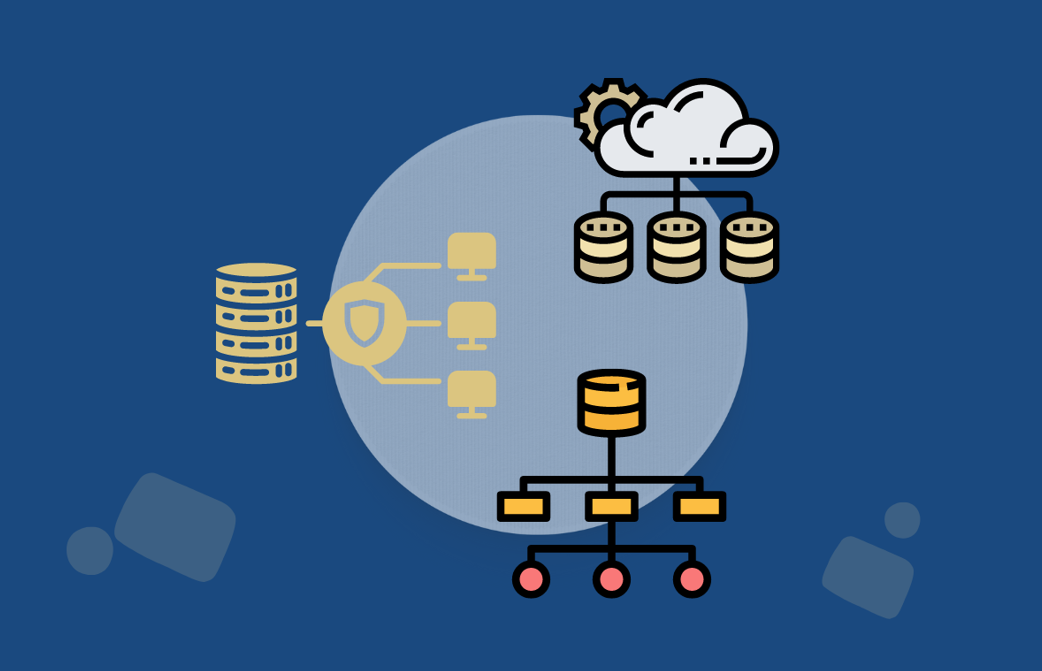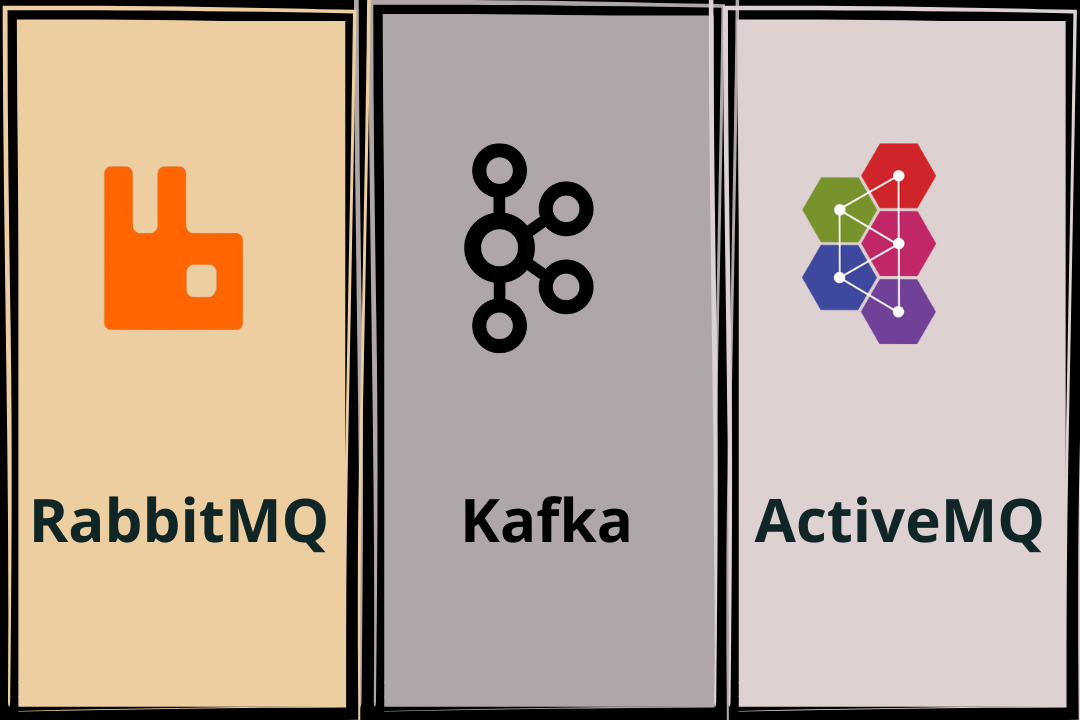Navigating the Best System Design Courses for Coding Interviews
In today's tech world, mastering system design is essential for excelling in coding interviews. There are numerous system design resources available, but it can be challenging to navigate to the right one that aligns with your specific needs.
Don’t worry, I'm here to guide you through this comprehensive journey. In this guide, I will focus on the importance of system design and provide insights on selecting the perfect resources tailored to your unique requirements, ensuring your success in coding interviews.
1. The Rising Importance of System Design in Coding
The system design knowledge during coding interviews plays a crucial role in the tech industry. Gone are the days when coding alone guarantees you a spot on teach team. The ability to design robust and complex scalable systems is a skill that can set you apart as a software engineer. System design skills are especially important for big tech giants such as MAANG/FAANG companies. These companies often build systems that handle millions or even billions of users and transactions per day. It is essential for engineers at these companies to have the skills to design and build systems that can scale to meet these demands.
Now-a-days, hiring managers and interviewers are more interested to assess whether you can design effective systems, handle trade-offs, and navigate the complexities of large-scale system design for their hiring decisions, particularly when you are applying for senior roles. Interviewers want to see that candidates can think critically about the different components of a system and how they interact with each other. They also want to see that candidates can make trade-offs and design systems that are optimized for specific needs.
As a software engineer, it's crucial to continually improve your system design skills, especially early in your career. These skills will empower you to solve complex software challenges more effectively and confidently in your daily tasks. Plus, they'll be invaluable when you're interviewing for advanced roles down the road. So, investing in your system design knowledge is a smart move for your career growth.
A. Fundamentals of System Design
System design is the process of defining the architecture, modules, interfaces and components, and the data that goes through that system. Its purpose is to satisfy particular needs and requirements of an organization or business through engineering of a coherent and highly efficient system.
You can think of it as a Blue Print for software systems. Imagine a building architect. They need to understand the materials, plan the structure, consider aesthetic elements, and ensure the building is sturdy and functional. Similarly, a software engineer or a systems engineer designs systems that are scalable, reliable, performant, and, most importantly, that fulfill business needs.
The fundamentals of system design are the basic principles and concepts that you need to know in order to design and build scalable, reliable, and efficient systems.
These fundamentals include:
-
System Architecture: A good system architecture is essential for ensuring that a system is scalable, reliable, and efficient. The system architecture should be designed to accommodate future growth and changes.
-
Data Modeling: A good data model will make it easy to store, manage, and query data. The data model should be designed to meet the specific needs of the system.
-
Caching: Caching can significantly improve the performance of a system by storing frequently accessed data in memory. This can reduce the number of times that the system needs to access the database or other slower storage systems.
-
Load Balancing: Load balancing can help to improve the reliability and performance of a system by distributing traffic across multiple servers. This can help to prevent a single server from becoming overloaded.
-
Fault Tolerance: Fault tolerance is the ability of a system to continue operating even when some of its components fail. This can be achieved by using redundancy and other techniques.
-
Consistency: Consistency is important for ensuring that users can trust the results that they get from a system. A consistent system will provide the same results to all users, even when multiple users are accessing the system concurrently.
-
Availability: Availability is important for ensuring that users can always access the system when they need it. An available system will be able to withstand failures and other disruptions.
-
Scalability: Scalability is important for ensuring that a system can handle increasing amounts of traffic or data without performance problems. A scalable system will be able to grow and adapt to meet the changing needs of its users.
-
Security: Security is important for protecting the data and resources of a system from unauthorized access. A secure system will use appropriate security measures to protect its data and resources from hackers and other malicious attackers.
B. Real-World Applications of System Design
- Google Search needs to be able to handle millions of queries per second from users all over the world.
- YouTube needs to be able to handle billions of video views per day.
- Facebook needs to be able to handle billions of user interactions per day.
- Amazon needs to be able to handle millions of orders per day.
- Walmart.com needs to be able to handle millions of orders per day.
- PayPal needs to be able to handle millions of transactions per day.
- Cloudflare delivers billions of web requests per day.
- Air Traffic Control systems need to be able to track and control thousands of aircraft in real time.
- Medical Monitoring systems need to be able to collect and analyze data from patients in real time.
- Self-driving cars need to be able to perceive and respond to their surroundings in real time.
2. Is it Easy to Learn System Design?
System design can be challenging, especially if you're new to it. Many engineers only encounter it when preparing for interviews with big tech companies like FAANG. This rush to learn complex topics at the last minute can be overwhelming.
System design involves understanding how to build complex systems, not just your current project. It's a vital skill for senior engineers at companies operating on a massive scale with intricate systems.
To succeed, start early, use accessible resources, and gain practical experience. Don't wait until the last minute to learn this critical skill. It will help you excel in interviews and your tech career.
3. What is the Main Purpose of System Design
System design is like making a big plan for creating complex tech systems, similar to how famous apps like Facebook or Instagram were carefully thought out. It begins after understanding what the system should do, much like figuring out the key features of these popular apps.
As we shift from understanding what the system needs to do to deciding how it will do it, it's a bit like going from having a cool app idea to planning how each part will work. We start with a list of what the system needs and what we've learned about it, just like how tech experts thought about what users would want in these famous apps.
In my experience, system design is where creativity meets problem-solving in tech. It's about making smart choices to fit all the parts together smoothly, ensuring the system is strong, can grow when needed, and isn't too hard to manage. This creative process is like solving a big puzzle, challenging but really rewarding. In the tech world, mastering system design is vital for creating systems that work well and can adapt as technology keeps changing.
4. How many Months to Learn System Design?
System Design Interviews are going to be around for a while, and getting good at these tech interviews is super important for your long-term tech career.
The time you need to prepare for these interviews can vary based on your situation:
- If you already know some stuff, 2-5 weeks of prep can work.
- If you're starting from scratch or don't have a lot of time, plan for 5-8 weeks.
- If you've got more time, you can stretch your prep to up to 14 weeks, depending on your situation, skills, and your job requirements.
This 8 weeks plan to master system design skills can be really helpful.
-
Week 1: Learn about scalability, API Gateway, Load Balancing, Caching, and essential theorems like CAP/PACELC and Bloom Filters.
-
Week 2: Dive into databases, data modeling, partitioning, sharding, and replication, including SQL and NoSQL databases.
-
Week 3: Study networking, REST, gRPC, GraphQL, DNS, Proxies, Websockets, and Long Poll - all the networking essentials.
-
Week 4: Explore distributed systems, consistency models, quorum, leader/follower, Merkle Trees, and consistent hashing.
-
Week 5: Learn about APIs, architectural design patterns, and microservices, including design patterns and microservices pros and cons.
-
Week 6: Dedicate this week to practice. Solve system design problems and get ready for interviews. Think about designing systems like social media platforms, such as Facebook Newsfeed, Instagram, Twitter Search, YouTube, Quora, and Stack Overflow.
-
Week 7: Keep practicing system design problems. Try your hand at designing systems like Dropbox, Typeahead Suggestion, and dealing with API Rate limiting and Messenger.
-
Week 8: More practice! Work on designing systems like a web crawler, proximity server, Uber, and Ticketmaster.
Remember, practice and preparation are the key to success.
5. What to Look for in a System Design Course
Now, we'll highlight the crucial factors to bear in mind while searching for a system design course. Discover the key considerations that will help you make an informed choice, aligning your course selection with your unique needs and career objectives.
A. Considerations for Different Experience Levels
When choosing a system design course, it is important to consider your current skill level. Whether you’re a beginner or an experienced software engineer, there’s a suitable system design course for you. If you are a beginner, you will need a course that provides a solid foundation in system design principles. This includes topics such as load balancing, api gateway, caching, data partitioning, indexes, proxies, SQL vs No SQL, CDNs, Heartbeat and Checksum etc.
If you are an experienced software engineer, you may want to consider a course that covers more advanced topics, such as distributed systems, messaging systems, system design patterns and cloud architecture etc. These topics are essential for designing and building large-scale systems that can handle high traffic and demanding workloads.
B. Tailoring Your Learning Path
In addition to your skill level, you should also consider your career goals when choosing a system design course. Personalization is key to effective learning. If you are interested in working in a specific industry or role, focus on courses that align with those aspirations.
For example, if your goal is to land a job at any FAANG/MAANG company like Facebook, Amazon, Google, Microsoft, Netflix or Apple, its crucial to be strategic in your selection. Look for courses that align directly with the skill sets these companies value and also the questions they commonly ask in interviews. This approach can provide you a significant advantage.
Furthermore, consider courses that offer direct placement opportunities or certifications recognized by these tech giants. Such programs can open doors to internships or job opportunities within these organizations, putting you on a direct path to achieving your career goals.
Remember, your learning journey should be tailored to your unique needs and circumstances. If time is a constraint for you, consider a shorter course that covers the fundamental concepts of system design. On the other hand, if you have more time and are looking to gain a deeper understanding, you might opt for a more comprehensive course that explores advanced topics. By aligning your learning with your career goals, you'll not only enjoy the process more but also set yourself up for success in your chosen field.
C. Assessing Course Content and Syllabus
Before you sign up for a system design course, take some time to go through what it's all about. Make sure the course talks about the things you're curious about and gives you a good overall understanding of system design. It's important to find a course that mixes theory with real-world examples, so you can really grasp the concepts.
You need to be sure that the topics covered align with your interests and that the syllabus is comprehensive. In other words, it should cover a wide range of system design principles. Don't rush into it – do your research and find the course that suits you best. This way, you'll get the most out of your learning experience.
D. Cost and Financial Considerations
System design courses can range in price from a few hundred dollars to several thousand dollars. While its essential to invest in your education, consider your budget when selecting a course and making your decision. The good news is that there are plenty of free and affordable courses accessible online. So, don't feel discouraged if you're working with a tight budget. You can still find quality educational resources that won't break the bank. Balancing your desire for knowledge with your financial constraints is a wise approach to ensure you get the education you need without overburdening your finances.
E. Course Reviews and Feedback
When it comes to assessing the quality of a system design course, one of the most valuable strategies is to delve into reviews and feedback provided by past students. Websites and platforms like DesignGurus, Coursera, Udemy, and edX frequently showcase candid reviews from individuals who have taken these courses. These reviews can be a goldmine of insights, offering you a glimpse into the course's effectiveness and overall quality.
By reading what previous students have to say, you can gain a better understanding of whether the course aligns with your learning preferences and objectives. Their firsthand experiences can help you make an informed decision about whether a particular system design course is the right fit for you. So, don't underestimate the power of peer feedback.
6. Exploring Top System Design Courses in 2023
When you're on a journey to master system design, picking the perfect course is a big deal. Luckily, in 2023, there are plenty of online courses and resources waiting for you. Let's check out some of the best ones that'll turn you into a system design whiz!
A. "Grokking System Design Fundamentals" by Design Gurus
Grokking System Design Fundamentals is designed to equip software engineers with the essential knowledge and skills required to design large complex systems. This course covers a wide range of key concepts, including caching, load balancing, data partitioning, proxy servers, and more, that are crucial for designing efficient, scalable, and reliable distributed systems.
By enrolling in this course, you will gain a solid understanding of the core principles behind designing large-scale systems, as well as practical strategies for tackling complex system design problems.
Upon completion of this course, you will be well-prepared to tackle system design interviews with confidence and demonstrate your ability to design and optimize large-scale distributed systems.
Whether you are an experienced software engineer looking to sharpen your system design skills or a new engineer seeking a solid foundation in distributed systems, this course will provide you with the knowledge and tools necessary to succeed in today's competitive job market.
Link to Course: Grokking System Design Fundamentals
B. "Grokking The System Design Interview" by Design Gurus
System design questions have become a standard part of the software engineering interview process. Performance in these interviews reflects upon your ability to work with complex systems and translates into the position and salary the interviewing company offers you.
Unfortunately, most engineers struggle with the system design interview (SDI), partly because of their lack of experience in developing large-scale systems and partly because of the unstructured nature of SDIs.
Even engineers who’ve some experience building such systems aren't comfortable with these interviews, mainly due to the open-ended nature of design problems that don't have a standard answer.
This course is a complete guide to master the System Design Interview. It is created by Design Gurus who are a team of hiring managers from Google, Facebook, Microsoft, and Amazon. They have carefully chosen a set of questions that have not only been repeatedly asked at top companies but also provide a thorough experience to handle any system design problem.
Link to Course: Grokking The System Design Interview
C. "Grokking The Advanced System Design Interview" by Design Gurus
This course presents the architectural review of famous distributed systems. The main goal is to extract out important design details that are relevant to system design interviews. The course also presents a list of system design patterns that constitute the common design problems and their solutions that different distributed systems have developed over time.
This course dives into famous distributed systems like Dynamo, Cassandra, Kafka, Chubby, GFS, HDFS, and BigTable. It's all about understanding how these complex systems work, which is super useful for system design interviews.
But it doesn't stop there. The course also gives you a bunch of design patterns. These are like ready-made solutions for common design problems in distributed systems. Whether it's balancing the load, handling data, or making sure things don't break, you'll learn practical solutions.
In a nutshell, this course helps you unravel the secrets of top-notch distributed systems and equips you with handy problem-solving tricks. It's perfect for getting ready for system design interviews or mastering real-world design challenges.
Link to Course: Grokking The Advanced System Design Interview
D. "Grokking Microservices Design Patterns" by Design Gurus
This course sheds light on why microservices have become the go-to architecture for scalable and resilient applications, from startups to tech giants. It navigates through the essential design patterns like Sidecar, API Gateway, Circuit Breaker, and more, providing real-world examples and code snippets.
Whether you're a seasoned developer, a budding software architect, or an IT professional looking to stay ahead of the curve, this course offers valuable insights into how to design and manage complex systems with microservices. Immerse yourself in this fascinating journey and embrace the future of software architecture.
Link to Course: Grokking Microservices Design Patterns
E. "System Design Interview" by Alex Xu
If you're gearing up for a System Design Interview, chances are you've heard about the famous "System Design Interview — An insider’s guide" book. It's one of my personal favorites and a top recommendation, right up there with "Designing Data-Intensive Applications."
But here's the inside scoop: not many folks are aware that the author has an incredible companion course available at ByteByteGo. This course takes system design to a whole new level.
It covers everything you'll find in the book and goes even further. What I love most about it is the detailed system design diagrams. They don't just show you the architecture; they also break down how the system actually functions and how it's put into action.
Whether you've read the book or not, this course is too good to pass up. It's not just about designing large-scale systems; it also teaches you essential computer science concepts that will stay with you for the long haul.
7. Additional Resources and Learning Aids in System Design Courses
System design courses serve as a reliable foundation for grasping essential principles and techniques. However, there are lots of extra learning resources out there to help you get even better at it. These additional materials can significantly augment your understanding and proficiency in system design.
-
Supplementary Reading Materials: Consider supplementing your course materials with books, blogs and articles on system design. Reading about real-world case studies and best practices can deepen your understanding.
Designing Data-Intensive Applications by Martin Kleppmann: This book is a treasure trove of knowledge about designing systems that handle large amounts of data.
Clean Architecture: A Craftsman's Guide to Software Structure and Design by Robert C. Martin: In this book, you'll explore the principles of software architecture, how to create flexible and scalable software systems, and much more.
For Engineering Blogs: Check the software engineering blogs of Uber, Netflix, Design Gurus, Pinterest.
-
Practice Problems and Hands-On Exercises: Practice makes perfect. Look for courses that offer practice problems and hands-on exercises. These opportunities for application are crucial for cementing your knowledge.
-
Interactive Workshops and Webinars: Participating in interactive workshops and webinars can provide you with a chance to learn from experts and engage in discussions with fellow learners.
-
Online Communities for System Design Enthusiasts: Join online communities and forums dedicated to system design. Platforms like Reddit, Stack Overflow, and specialized forums provide spaces for asking questions, sharing insights, and networking with professionals in the field.
-
Mentorship Opportunities: Seek out mentorship opportunities with experienced system designers. Learning from someone who has walked the path you're on can be incredibly valuable.
-
Tools and Software for System Design: Familiarize yourself with the tools and software commonly used in system design. Platforms like Lucidchart, Draw.io, and even simple pen and paper can be invaluable for creating system diagrams and visualizing your designs.
-
System Design Interviews: Prepare for system design interviews by practicing with real-world problems. There are many resources available online, such as books, articles, and practice problems.
-
Open Source Projects: Contributing to open source projects is a great way to gain experience with system design and to learn from other developers.
8. Next Steps: Preparing for Your System Design Interview
- Practical Application of System Design Concepts: Don't just learn theory, apply it. Start designing your own systems, starting with small projects and gradually tackling more complex challenges. Hands-on experience is key.
- Understand Key System Design Challenges: To prepare for questions about handling specific challenges, you need to understand key system design challenges. This includes challenges like scaling, reliability, availability, and security.
- Understand Different System Design Options: To prepare for design questions about evaluating trade-offs, you need to understand different system design options and their strengths and weaknesses. This includes understanding different types of databases, storage systems, architectures, and more.
- Practice Designing Different Types of Systems: The best way to prepare for designing specific types of systems is to practice. Pick popular system design problems, like a social media platform, an e-commerce site, or a video streaming service, and try to design them.
- Mock Interviews and Feedback Sessions: Simulate real interviews with peers or mentors. Receive feedback on your design decisions and presentation skills. Continuous practice will build your confidence.
- Time Management and Study Strategies: Balancing learning with your other commitments requires effective time management. Develop study strategies that work for you, and stick to a consistent schedule.
- Building a Portfolio of System Design Projects: Create a portfolio showcasing your system design projects. This serves as evidence of your skills and can impress potential employers.
- Staying Updated with Evolving Industry Trends: The tech world is ever-changing. Stay updated with the latest trends in system design, cloud computing, and other relevant technologies.
Want to learn more about system design interview






